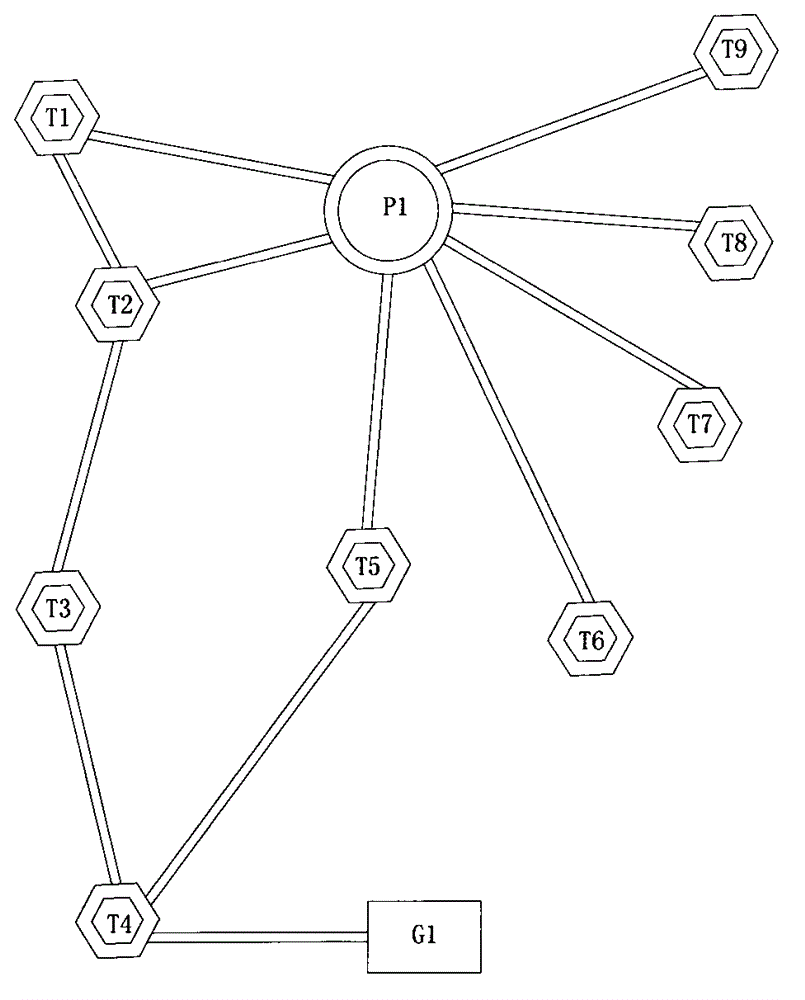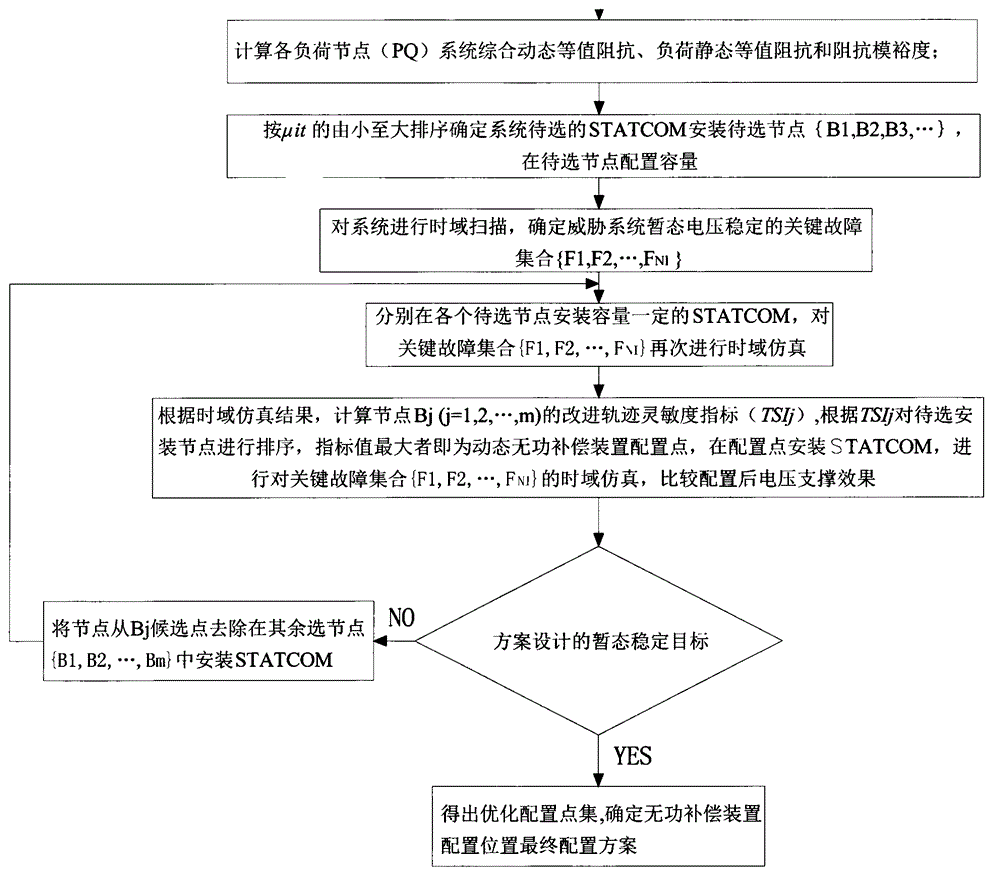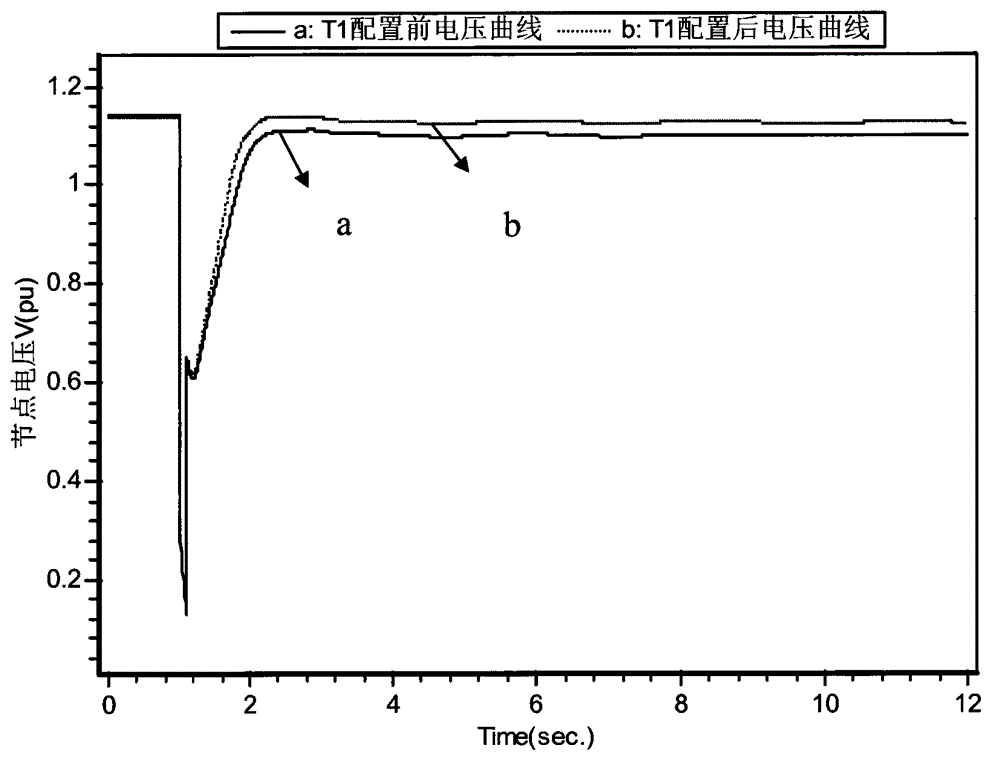A method for selecting the location of a dynamic reactive power compensation device in a receiving-end power grid
A technology of receiving-end power grid and compensation device, applied in reactive power compensation, reactive power adjustment/elimination/compensation, etc., can solve the problems of difficulty in widespread use, large-capacity adoption, and high cost of dynamic reactive power compensation device equipment.
- Summary
- Abstract
- Description
- Claims
- Application Information
AI Technical Summary
Problems solved by technology
Method used
Image
Examples
Embodiment Construction
[0035] like figure 1 The regional power grid system shown is a geographical wiring diagram of an actual power grid. As the receiving end regional power grid of the present invention, it includes a 500KV balanced station P 1, and nine 220KV PQ nodes, numbered T1~T9, each node The system parameters are as follows: 1 power station G 1, generating power: 600+j204; the system is studied under the maximum operating mode in summer.
[0036] Attached below figure 2 Shown case, the inventive method is described in detail:
[0037] (1) Use the power system comprehensive simulation analysis (PSD-BPA software) to fill in the LI card settings in the stability file to conduct time-domain simulation analysis of the scene where the load in the study area continues to increase by 5% within t=12s, including a total of 9 PQ nodes , determine the PQ nodes to be investigated as {T1, T2, ..., T9}, record the number of the i-th PQ node as i, sort out the data of the voltage, active and reactive s...
PUM
 Login to View More
Login to View More Abstract
Description
Claims
Application Information
 Login to View More
Login to View More - R&D
- Intellectual Property
- Life Sciences
- Materials
- Tech Scout
- Unparalleled Data Quality
- Higher Quality Content
- 60% Fewer Hallucinations
Browse by: Latest US Patents, China's latest patents, Technical Efficacy Thesaurus, Application Domain, Technology Topic, Popular Technical Reports.
© 2025 PatSnap. All rights reserved.Legal|Privacy policy|Modern Slavery Act Transparency Statement|Sitemap|About US| Contact US: help@patsnap.com



